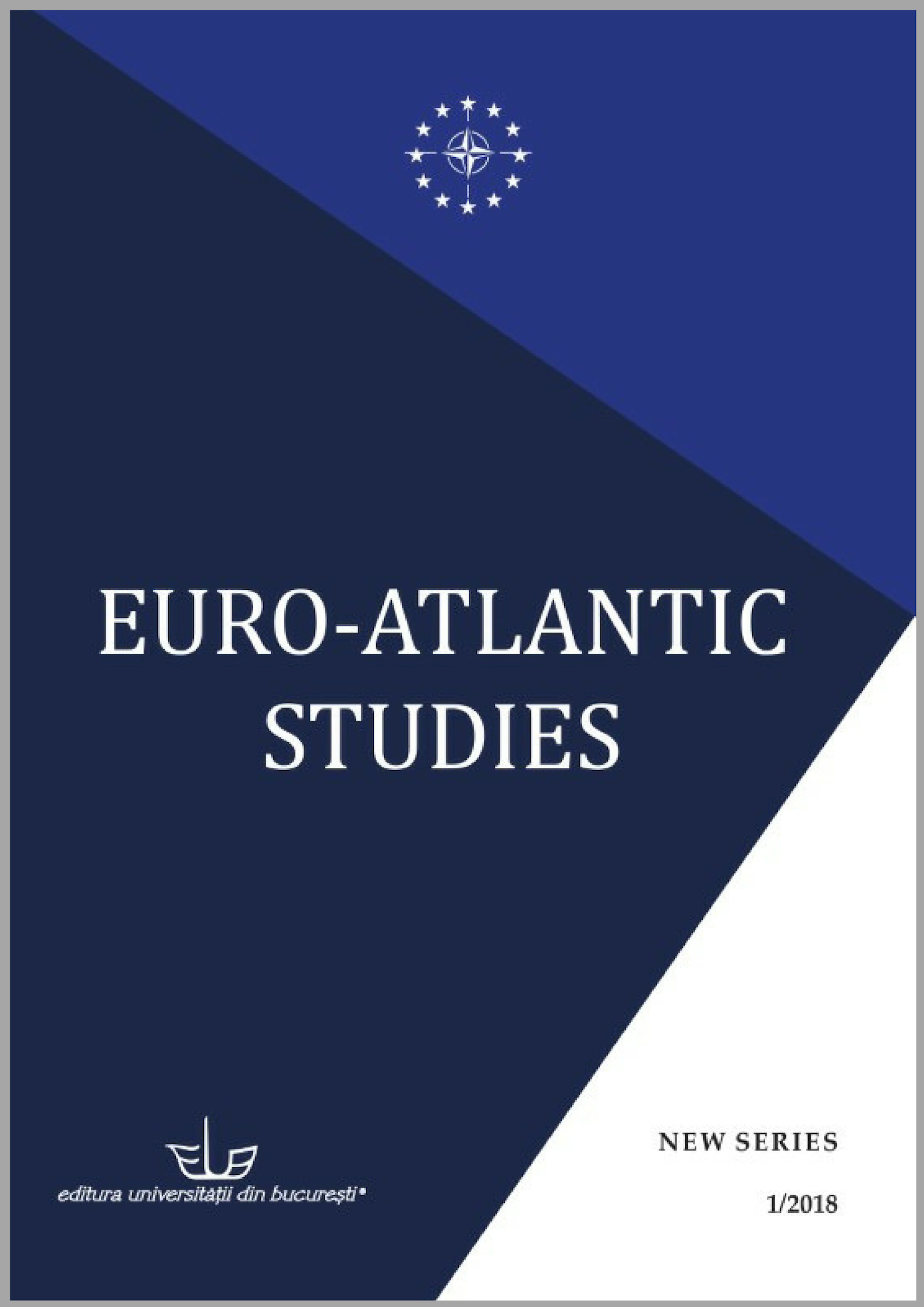
We kindly inform you that, as long as the subject affiliation of our 300.000+ articles is in progress, you might get unsufficient or no results on your third level or second level search. In this case, please broaden your search criteria.

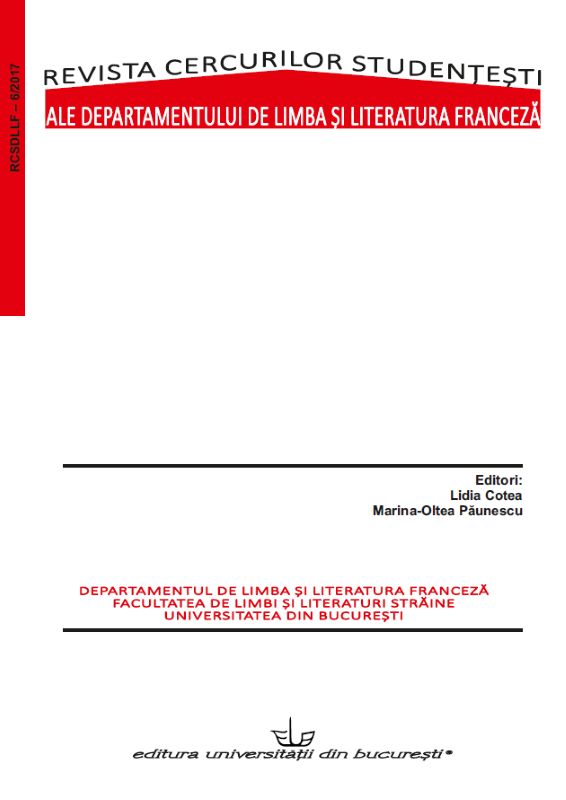
The work hereby starts with the explanation for provenance of a folk dress seen in the painting Romanian Lady by F. A. Bridgman, identified as the region of Muscel. It also presents the interest shown by queen Elisabeth of Romania for the folk dress, particularly the Muscel one, which she used to wear in many occasions and her way of using the folk dress in several campaigns, especially to promote the country abroad. The research shows that this interest is due to Ana Davila, Romanian with noble descent, and the tradition Ana followed in this matter, serving the ideals of equality, fraternity, liberty and national union. We show the influence of the activities done by Ana Davila and her relatives to the artistic creation between 1850-1860, to the beginnings of ethnographic research in Romania and to the development of national identity and conscience whose most important promoter at the time was queen Elisabeth of Romania.
More...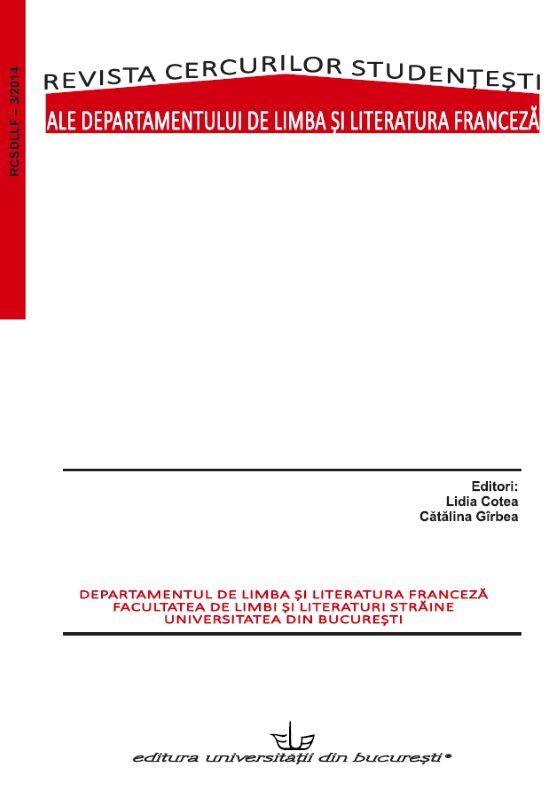
A brief immersion in the history of mentalities and concepts, this essay follows gradually the different resorts of a specific typology of interaction between men and women-fear, skepticism, cowardice, ignorance oriented the male perception of women in / towards a degrading/downgrading direction. Who are these women who over the time, from Eve, Helen of Troy to Jeanne d’Arc, George Sand or Rosa Luxemburg, broke a pattern-the pattern of the vulnerable, quiet, unable to make decisions- woman? Literature, painting are rich in representations of those we called the deadly beautiful, the frustratingly brave, the erudite, the single or the widow, the remonstrator: women who speak, show themselves, reason and fearlessly defend the product of their reasoning in a phallocentric society.
More...
The relationship between citizenship and nation state is still one of the most intriguing and debated scholarly topic. It is, in the same time, an ever present, mostly tensioned, fact of contemporary political life. Political reality endlessly challenges theoretical frameworks and scholarly researches on this issue. The numerous questions that can be raised about the widely debated equation between the state seeking for legitimacy, on one side, and the nation, on the other, side, citizenship loyalties being simultaneously claimed by both, may be reduced to a fundamental one: what kind of solidarities dominate in a political community, or, more simply, what binds people together? Answers to this question are based on the equation between state, citizens and nation that characterizes political modernity
More...
In a constitutional democracy like the United States, law provides the context and structure for the larger political world. It can act as a force to cement the control and authority of the majority (either in a just or an unjust manner), it can empower political minorities in challenges against majority control and most frequently, it can provide opportunities and tools for both majorities and minorities to politically participate. The law, and its alteration, allow those who challenge the dominate social structure the ability to use the very legitimizing agent of the majority (the Constitution, statutory laws, and public codes) to force the majority to change according to their own rules. This is true not only in changing statutory laws and regulations, but also in the transformation of jurisprudential reasoning.
More...
L’étude questionne les permanences de la société politique roumaine. Pour Daniel Barbu, la culture roumaine a repris certaines pratiques et cérémonies, comme |’instrumentaire culturel du Byzance, mais sans emprunter aussi ce qui leur donnait un sens: homoétheia, le mode dont la société byzantine se comprenait et se définissait elle-méme. Les Roumains n’ont pas ainsi developpé, comme corps politique, la conscience de soi des Byzantins, mais se sont manifesté dans un esprit tout a fait contraire au Byzance politique. L’auteur renverse ainsi la perspective inaugurée par l’historien roumain Nicolae lorga - qui parlait d’un «Byzance aprés Byzance» — pour parler d’un «Byzance contre Byzance», vrai modéle de la politique roumaine.
More...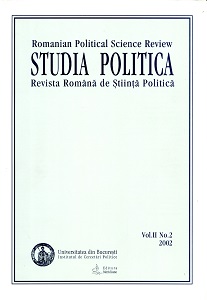
En mars 1918, Sfatul Țării, l'organe législatif de la République moldave nouvellement instituée vote «l'union à la mère-patrie» - la Grande Roumanie1. Une année plus tard, la Roumanie, dans sa nouvelle composition territoriale, obtient la recon naissance officielle des grandes puissances européennes et de la Société des Nations1 2. Le gouvernement roumain démarre immédiatement une campagne de redressement économique et culturel de la province. Le ministère de l'Éducation, aidé par l'Armée, met en place de nouveaux réseaux d'établissements éducatifs et culturels dont le rôle déclaré est la «roumanisation» urgente de la région. Ces organismes publics encouragent aussi les initiatives locales de formation de sociétés et d'organes de presse dont la fonction est de propager la langue et la culture roumaines.
More...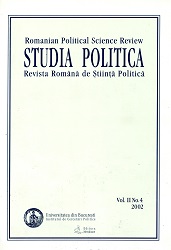
Véritable cavalier seul dans une Europe de l'Est en pleine mutation, Nicolae Ceaușescu est triomphalement réélu en novembre 19891, chef du Parti Communiste Roumain et Président. Partisan d'un «socialisme scientifique» à la roumaine, Ceaușescu qui fait l'objet d'un culte de la personnalité, ne cesse de fustiger les pays réformateurs d'Europe de l'Est, la Pologne et la Hongrie en tête. Toute dissidence est immédiatement et brutalement réprimée. Malgré les critiques de plus en plus vives des pays occidentaux, Ceaușescu a poursuivi son projet de centralisation urbaine qui entraîne la destruction de plusieurs milliers de petites localités rurales et le déplacement forcé de leurs habitants vers les villes. Il souhaite regrouper tous les Roumains au sein des grandes villes dans l'illusion de parvenir par ce moyen autoritaire à combler le retard industriel et économique du pays. «L'Union fait la force de notre pays» proclame-t-il. En réalité, si durant le mois de décembre 1989, son pays fait bloc, c'est... contre lui. Le 25 décembre, le présentateur du journal de la seule chaîne de télévision roumaine commence ainsi son plateau : «L'Antéchrist est mort le jour de Noël». La Roumanie entre à son tour dans l'ère postcommuniste.
More...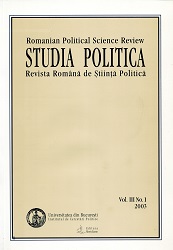
Although the French Doctrinaires built up one of the most important political theories of the nineteenth-century, they remain largely unknown in the English-speaking world. This paper examines the Doctrinaires’ theory of publicity by concentrating on François Guizot’s History of the Origins of Representative Government in Europe and Royer-Collard’s parliamentary discourses. The Doctrinaires’ theory of publicity shows how the norms of publicity vary with different social and political circumstances and sheds light on the ways in which state and society can be involved in a complex process of mutual empowerment. Special attention is paid to Guizot’s theory of publicity as the cornerstone of representative government and to the Doc- trinaires’ views on freedom of the press.
More...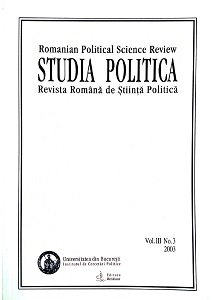
Une vaste littérature a émergé les dernières années sur les transformations à l'œuvre dans les pays de l'Europe centrale et orientale suite à la chute des régimes communistes. La multiplication de ces recherches se justifie pleinement par l'ampleur des changements éthiques et idéologiques, en économie, dans le domaine juridique, au niveau social et politique, en matière de relations internationales. Le rythme des trans formations et leur résultat deviennent plus visibles à partir du moment où les pays de la région démarrent les négociations d'adhésion à l'Union européenne (UE). Le modèle imposé aux nouveaux candidats à l'élargissement a un grand impact sur les «domestic patterns», sur leurs politiques (policies) et leurs institutions (polities), cependant, un des aspects qui est plutôt ignoré dans la littérature de spécialité est l'impact de l'intégration européenne sur les «structures de représentation»3, sur les partis, les groupes d'intérêts, les systèmes politiques etc.
More...
La période entre les deux guerres en Roumanie se caractérise par une lutte continuelle des femmes pour la reconnaissance de leurs droits civils, politiques, économiques. Pour obtenir ces droits, les femmes ont formé des associations qui ont évolué, au long du temps, se transformant en associations de lutte pour les droits des femmes (au commencement, ces associations avaient des buts charitables). Nous nous proposons de suivre la lutte de ces associations et des femmes présidentes qui s'inscrit dans la sociologie de type actionnaliste. Nous prenons en compte l'action des associations, comprise comme une action collective et l'action des femmes représentantes de ces associations, une action individuelle. Ce qui nous intéresse ce sont les moyens utilisés par les femmes membres des associations d'obtenir leurs droits, notamment le droit de vote.
More...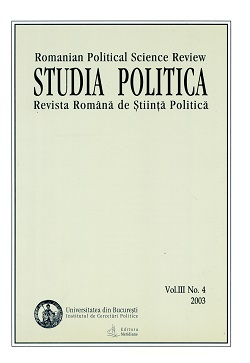
La Roumanie postcommuniste est, certes, nettement différente de la Roumanie communiste. Depuis la chute du régime communiste, il y a eu rédaction d'une nouvelle Constitution, il y a eu quatre épreuves électorales, il y a, à treize ans de l'adoption de la Loi fondamentale, une révision constitutionnelle déjà accomplie, de même une certaine volonté politique allant dans le sens de la révision du régime électoral, sans que les deux processus soient manifestement ou nécessairement liés1.
More...
Le 12 décembre 1989, dans une réunion commune, le Comité Central du Parti Communiste Roumain et le Bureau Permanent du Conseil Supérieur de Développement Économique et Social ont fixé pour le 11 mars 1990 les prochaines élections pour la Grande Assemblée Nationale et les conseils populaires. Les élections devaient être tenues selon les règles d'un «régime de parti monopolistique»1, mais qui avait assoupli, à partir de 19751 2, la contrainte exercée sur les citoyens: en effet, le système des candidatures multiples, mais dépendantes toutes du Front de l'Unité Socialiste3, fonctionne sous une forme, certainement, très limitée, aux trois dernières élections communistes4. Mais la décision du 12 décembre 1989 reste sans effet: pour la troisième fois dans l'histoire politique moderne de la Roumanie, des élections fixées légalement ne se tiennent pas. Cette fois, c'est parce que quatre jours après la déci sion du 12 décembre 1989, la Révolution anticommuniste commençait à Timișoara.
More...
Parmi les études sur les pays postcommunistes la question de la démocratie apparaît comme une problématique centrale débouchant sur une série de réflexions sur les trajectoires empruntées, l'identification des facteurs de changement, les formes de démocraties produites. Au-delà de l'intérêt scientifique, ces recherches servirent souvent d'appui aux programmes des bailleurs de fonds internationaux dont le FMI, la Banque Mondiale et l'Union européenne. Ces applications concrètes permirent de mesurer la diversité des situations entre chacun des pays d'Europe centrale et orientale et la complexité des réalités sociales. Après 12 ans de «transition», le retour au pouvoir des ex-communistes dans plusieurs de ces pays démontre que la démocratie à «l'occidentale» n'est plus vraiment plébiscitée par l'électeur. Ces nouvelles démocraties sont fragiles, instables et mal connues.
More...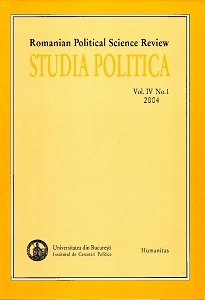
In order to individualize Norberto Bobbio as a political philosopher, the article explores the meanings and uses the Italian author assigned to political philosophy. In so doing, the paper draws mainly on a later work, Elogio della mitezza e altri scritti morali (Pratiche Editrice, Milano, 1998), which was published in English under the title "In praise of meekness", in Convivium. Journal of Ideas in Italian Studies, I, no. 1,1995, pp. 21-38. The paper's contention is that Bobbio uses once again his analytical method of understanding a concept by exploring its opposite. Thus, the Italian political philosopher goes against the mainstream that, from Machiavelli to Schmitt, focuses on aristocratic and heroic political virtues as courage, magnanimity, discretion, and the like in tended to empower some people to govern most of the people. Bobbio takes the side of a non-political virtue, namely meekness, described as the virtue of the private citizen who has no ambition to rule over things or people. Bobbio argues that a better appraisal of what politics is can therefore be achieved by considering what is beyond politics.
More...
This study attempts to explain how the decision-making process is handled in the political parties at the European level. The author proposes to interpret a case study on the European People's Party, while concentrating on the transnational processes developed by the (national) political parties, the parliamentary group in the European Parliament, and the extra-parliamentary party or federation. The broader aim is to assess and understand how the neofunctionalist propositions, the intergovernmental implications, and the neoinstitutionalist observations (apud Simon Hix) explain the development of the Europarties.
More...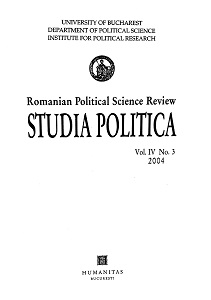
19th century Romanian society experienced a reconstruction of individual and collective identities due to the numerous social, cultural and political changes. This study focuses on the political effects of normative scientific standards, i.e. on the ideological stakes underlying the hygienist discourse. The reshaping of social hierarchies and the emergence of new actors - i.e., the "experts", who seek to legitimize the new political discourse - call for a re-evaluation of the status of hygiene and of the hygienist specialists during the 19th century. Taking the Western analyses treating similar topics as a starting point, this study suggests that respectability and national ideology are the vectors in the process of elaborating new social models and new gender identities. A careful examination of the hygiene treatises - whose specific object and audience were bourgeois women - allows the reconstruction of a comprehensive normative model prescribing a systematic control of feminine gestures, stances and sentiments. As those treatises repeat the stereotypes of the dominant ideology - e.g., the importance of demographic growth and the emphasis on work and savings - the author develops the intrinsic link between the political order and the corporal order.
More...
The emergence of World Zionist Organization at the end of 19th century and the increasing sympathy of world Jewry for political Zionism have strengthened the sense of the need to obtain a Jewish national home in Palestine. In a positive way, the end of the First World War and the decision of the League of Nations to place Palestine under British mandate favored regional development, especially of the Jewish community living there. Under the foreign administration, the Jewish people borrowed the proper aspects of the British model of parliamentary democracy and adapted them to the needs of the Yishuv, at a time when Jewish ideal enjoyed support and admiration, due in particular to Zionist diplomacy in Western Europe and the United States. Trying to maintain a good relationship with the British administration in order to fulfill its interests, the Jewish community in Palestine has thrived in various areas such as: political-institutional organization, economy, defence and demography, rapidly reaching a high level of development. These factors contributed tremendously to the birth of a modern democratic Jewish state. The reality of the simultaneous operation in Palestine of the three sets of institutions, those of the Yishuv, those of the Zionist Organization and those of the British administration represented a unique and remarkable fact. After Israel gained independence, the attempt to provide continuity to pre-state institutions represented a reality that was reflected in the flawless formula of the permanent institutions, in order to meet the needs of the new state in a situation of internal and international crisis.
More...
The institutional organization of the American cultural diplomacy from the end of the First World War and the full engagement of the United States in the Second World War was an experimental, reactive, and unsubstantial policy. Even though the idea of using culture or arts as diplomatic tools was rejected by many governmental officials, there were many personalities like President Roosevelt, who foresaw that the power of art and culture represents an important part of states’ foreign policy. In fact, since the Cold War till now, cultural diplomacy has acquired special significance becoming an important instrument that operates among the other diplomatic methods.
More...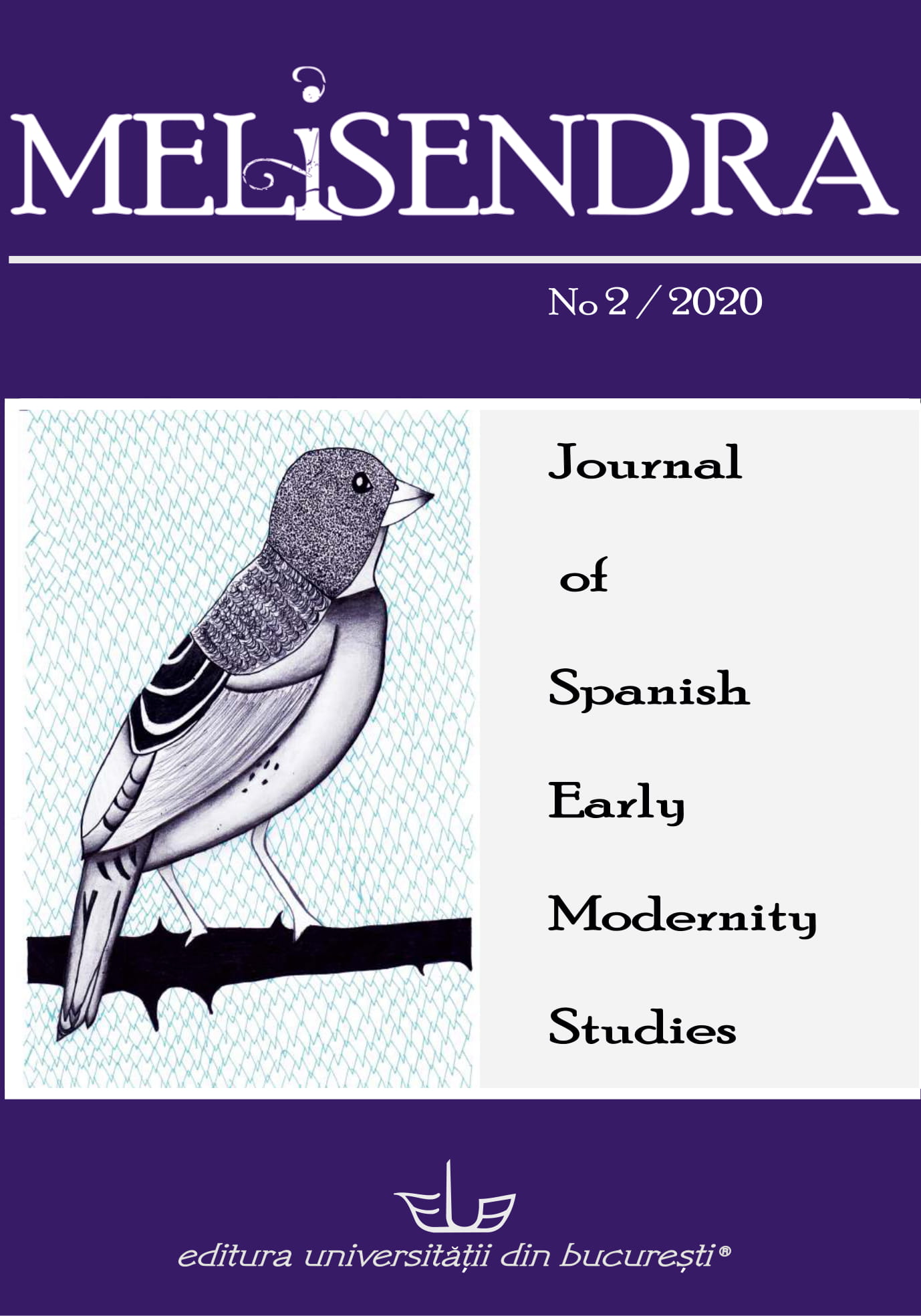
Selva de Aranjuez es una de las obras más representativas del género poéticodescriptivo en el Siglo de Oro. La obra ha sido objeto de discusión por presentar dosversiones paralelas atribuidas a diferentes autores bajo títulos distintos: La églogapastoril asignada por Argote de Molina a Luis Gómez de Tapia —traductor de OsLusíadas de Camões— e incluida en el acrecentado Libro de la montería (1582); ySelva de Aranjuez, localizada en el Cartapacio poético del Colegio de Cuenca (s. XVI)y atribuida al traductor de la Eneida de Virgilio, el toledano Gregorio Hernández deVelasco. En este artículo se discuten los argumentos a favor y en contra de lasatribuciones de la obra, tratando de pronunciar en último término, de forma consensuadaen diálogo con los especialistas que se han aproximado a la pieza, un veredicto fundadoen torno a su autoría.
More...